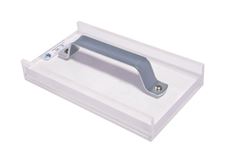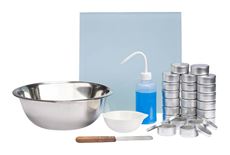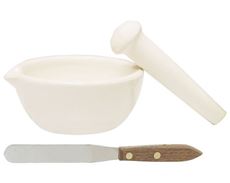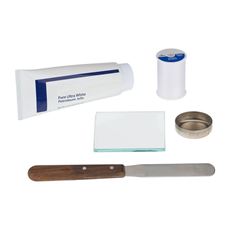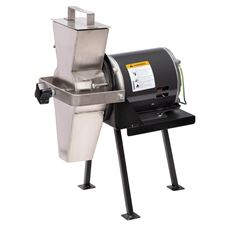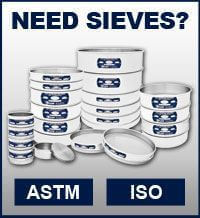- Log in
- Favorites List
-
Shopping Cart
You have no items in your shopping cart.
Atterberg Limits Equipment
The Atterberg Limits of soils are determined with a series of laboratory tests that classify the properties of silt and clay soils at different moisture contents. Geotechnical engineers use Atterberg limits to design foundations for structures and predict the behavior of soils for fills, embankments, and pavements.

Albert Atterberg, a Swedish agricultural scientist, established the boundaries of soil consistency in 1911 with a series of simple tests:
- Liquid limit is defined as the water content at which soil changes from a plastic state to a liquid state when testing in a liquid limit machine.
- Plastic limit is the water content when soil can no longer be rolled into a 1/8in (3.2 mm) diameter thread without crumbling.
- Shrinkage limit is the water content at which the further loss of moisture does not cause a decrease in the volume of a specimen.
Atterberg soil indexes are calculated from the test results of liquid and plastic limits tests to classify soil types and properties:
- Plasticity Index, or PI, is the plastic limit subtracted from the liquid limit and indicates the size of the range between the two boundaries. Soils with a high PI have a higher clay content. If the PI value is higher than the low to mid-20s, the soil may be expansive under wet conditions or exhibit shrinkage in dry conditions.
- Liquidity Index, or LI, is determined by subtracting the plastic limit from the natural water content of the sample, then dividing by the PI. Soils with a LI of 1 or more will be closer to the liquid state. A LI of 0 or lower indicates soils that are harder and more brittle. The LI allows the prediction of soil properties at different moisture.
- Consistency Index, or CI, is the liquid limit of the soil, minus the natural moisture content, divided by the PI. It is related to the LI and is an indicator of relative shear strength. As CI increases, the firmness, or shear strength of the soil also increases.
- Activity Number of a soil is the ratio of the PI to the clay fraction (particles finer than 2µm). Soils with an activity number of more than 1.25 are considered active and will show a greater chance of volume in response to moisture conditions. These soils will expand in wet conditions and shrink in dry conditions.
Atterberg limit test equipment from Gilson meets ASTM D4318, ASTM D4943, and other standard test methods. High-quality materials and rugged construction ensure accuracy and long service life.
- Plastic Limit Roller device saves time and improves test results for plastic limit specimens. The patented design reduces operator error and meets standard test method requirements.
- Liquid Limit Machines are available in automated or manual models, with or without a counter. All include a brass cup, carriage for drop control, and a set of plastic Casagrande grooving tools for determining the liquid limit.
- Liquid Limit/Plastic Limit Test Accessory Set is made up of laboratory tools needed to perform Atterberg limit tests in accordance with ASTM D4318.
- Atterberg Limits/Grain Size Accessories include spatulas, wash bottles, mortar & pestles, evaporating dishes, sample containers, and graduated cylinders used for Atterberg limits and grain size testing.
- Shrinkage Limit Set is a complete kit with all the equipment necessary to determine the ASTM D4943 test for shrinkage limits of cohesive soils.
- Soil Grinder is an alternative method to traditional mortar and pestle methods for sample reduction. Soil samples are automatically reduced to individual particle sizes for Atterberg Limits or Grain Size testing.
For more information on Atterberg Limits Equipment, here are our related blogs:
















